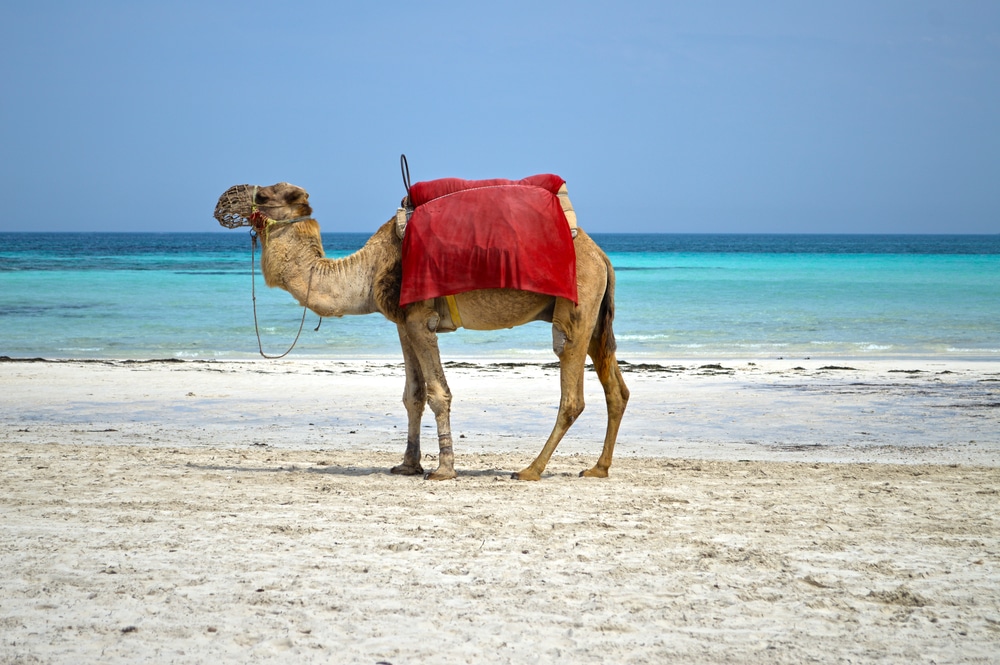Tunisia is an excellent destination and caters to all tastes. From wellness to sports and adventure holidays, there is everything. The sandy beaches of the Mediterranean, forested mountain regions and hot desert areas beckon.
Even the Romans were taken with the land and settled there in some cases. The country is also rich in history and culture.
Tunis – Cultural centre of Tunisia
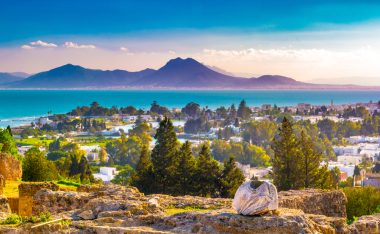
As the capital, a holiday in Tunis is of course particularly in demand. The city is located in the north of the country almost directly on the sea. The historic old town of Tunis is one of the best-preserved medieval cities in the Islamic world. The modern districts with their numerous luxury hotels and restaurants are grouped around the old town.
In addition to the medina, the Bardo Museum of Archaeology is also a landmark of the city. There you will find testimonies of Roman culture, such as elaborate mosaics, but also exhibits from other cultural periods, such as Punic statues.
Not far from the city, there are also the excavations of historic Carthage.
With its diversity, Tunis is a crossroads of cultures and, in addition to relaxing wellness experiences, also makes an authentic encounter with Tunisian culture possible.
Sousse – Past and Present
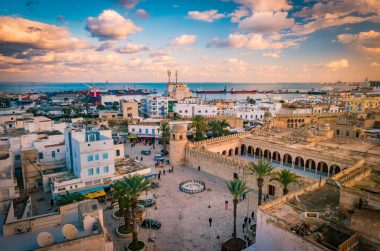
Originally a Phoenician trading post, Sousse is now the third largest city in Tunisia. However, it did not receive its current name until around 800.
The old town also dates back to the 9th century and has been a UNESCO World Heritage Site since the late 1980s. Many a building block there comes from the ruins of Carthage. The city wall of the old town is also particularly worth seeing.
There are various bazaars scattered throughout the city, divided by theme.
Whatever time of year you travel to Sousse, it’s definitely worth it. In summer, the beaches beckon, but you can always enjoy the cultural richness or the modern nightlife.
Hammamet – Modern seaside resort
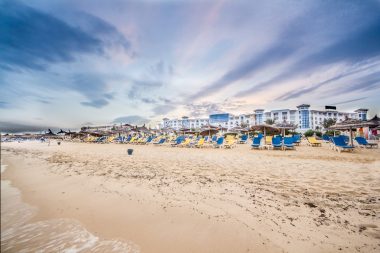
The city of Hammamet in the north of Tunisia is a seaside resort straight out of a picture book. Miles of beaches border the city towards the water. Therefore, the place is also considered the most visited region in Tunisia.
At the beginning of the 20th century, Hammamet was still almost unknown. Around 1900, however, artists such as Paul Klee, August Macke and Oscar Wilde discovered the fishing village and subsequently it became a popular travel destination.
However, if you are looking for peace and quiet, you won’t find it in Hammamet today. The hotels are lined up closely together to accommodate the countless tourists in the high season.
The new Yasmine district is completely geared towards tourism. Beaches, hotels, cafés, restaurants, shopping streets, excursions to the Mediterranean Sea and even an ice skating rink are offered to its visitors.
Nevertheless, Hammamet also has other things to offer. The Great Mosque and the fortress in the medina are particularly interesting from a cultural point of view.
The Carthageland amusement park brings the history of Tunisia to life. At least you can walk between figures of Hannibal’s elephants and go on whitewater trips in replica cathar ships.
Djerba – Tunisian island in the Mediterranean Sea
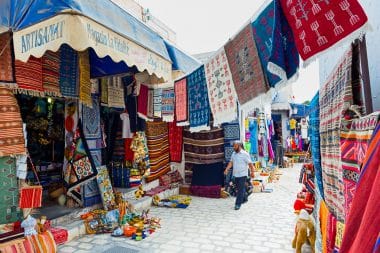
With its warm beaches, the island of Djerba is picturesquely located off the coast of Tunisia. The place is particularly popular for family holidays.
The island, which is now largely modern, is also the ideal holiday destination for a first trip to the Arab world, as it is well suited for a gentle acquaintance with the culture. Roman and Jewish influences, among other things, are also noticeable.
The island also has a lot to offer architecturally. Mosques, synagogues, archaeological sites and the ruined fortress of Bordj-el-Kebir offer enough excursion destinations for travelers interested in culture and history.
Sidi Bou Saïd – Fairytale coastal town
As if straight out of a painting, the artists’ village nestles on the coast of the Mediterranean.
The Moorish architecture literally welcomes you with open arms. Its origins can be found in the 16th century, when Moors settled throughout northern Tunisia. However, the place itself is several centuries older and was named after the mystic and saint Abou Said ibn Khalef ibn Yahia Ettamini el Beji.
Since 1915, the village has been a listed building and has been strongly dedicated to art. August Macke and Paul Klee, among others, had also lived in Sidi Bou Saïd for a short time.
Especially the architecture and picturesque atmosphere attract many tourists today. You can stroll through the bazaar or enjoy traditional cuisine in the Café des Nattes.
Matmata – Like an alien planet
The small Berber village of Matmata is characterized by numerous cave dwellings, which are still inhabited today.
However, Matmata became really famous through Star Wars. In 1976, it served as a backdrop for the desert planet Tatooine in “Star Wars Episode IV: A New Hope” and was filmed there again in 2002. Even meetings of die-hard Star Wars fans in costume sometimes take place in and around Matmata. The 40 °C does not seem to bother us.
The place itself can only be viewed as part of a guided tour, as some residents are not comfortable with the disturbance of the peace and some homes were entered by visitors without permission in earlier times. However, the majority has adapted to tourism and many a private house is gladly shown.
Können wir Ihnen helfen?
Benötigen Sie Unterstützung bei Ihrer Reiseplanung oder weitergehende Informationen zu einzelnen Reisezielen? Wir freuen uns über Ihre Kontaktaufnahme.


